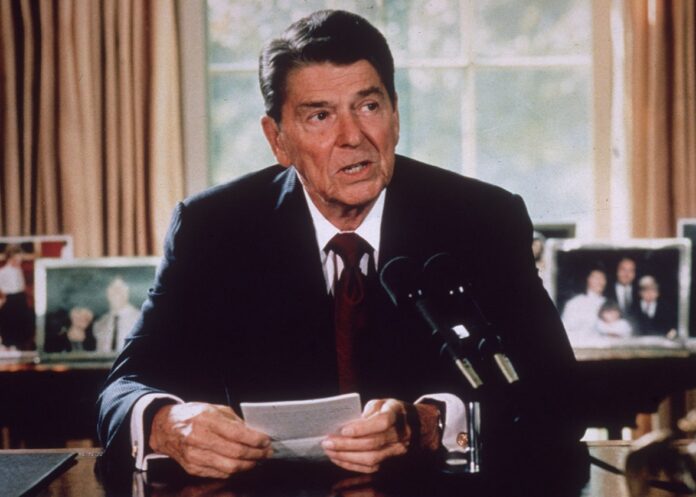Thirty-six years ago, President Reagan did what no president dared to do since. He used the term “genocide” to reference the horrific acts that took place between 1915 and 1923 – the systematic eradication of the Armenian people at the hands of the Ottoman Turks. This brutal event killed some 1.5 million Armenians and displaced another 500,000, leaving the total global Armenian population at one-third of its pre-genocide level.
Today the global Armenian population has rebounded, totaling 10 million, with 1.5 million residing in the United States Armenian diaspora. This incredible rejuvenation happened because of the heroic acts undertaken by individuals who acted as saviors in the face of adversity.
And no nation did more than America. The formation of the Near East Relief fund in 1918 occurred at the urging of Ambassador Henry Morgenthau, Sr., to prevent the complete destruction of the Armenian population. The U.S. government responded, incorporating by an act of Congress in 1919 the Near East Relief (NER), which provided humanitarian relief to the far-flung nation of Armenia.
Between 1915 and 1930, NER administered $117 million assistance, equivalent to $1.25 billion today. Nearly 1,000 men and women served overseas during that time, and thousands more volunteered to help build scores of orphanages, vocational schools, and food distribution centers, saving the lives of over a million Armenian, Greek and Syrian refugees, including 132,000 orphans scattered across the region from Tbilisi to Constantinople. Near East Relief was an act of unprecedented philanthropy, which American historian Howard M. Sachar noted “quite literally kept an entire nation alive.”
Armenians were the first large scale refugee population of the 20th century and sadly, history repeats itself today as we see some 65 million displaced populations fleeing for their own safety and security. From Syria to Sudan this story plays out in front of our eyes daily. As such, we must acknowledge the horrors of the past to constantly remind ourselves what can happen in the future. Nobel prize winner and holocaust survivor the late Elie Wiesel said it best: “Neutrality helps the oppressor, never the victim. Silence encourages the tormentor, never the tormented.”
Failing to acknowledge the truth is a dangerous scheme, but forgetting it is even worse. This notion was not lost on Adolf Hitler, who infamously alluded to the genocide in his second speech to the Wehrmacht commanders a week before they invaded Poland in 1939. He commanded his so-called Death’s Head units “with the order to kill without pity or mercy all men, women, and children of the Polish race of language.
Only thus will we gain the living space that we need. Who still talks nowadays of the extermination of the Armenians?”
But Hitler was wrong in his assessment, and many did remember the Armenians. Noted scholar and human rights advocate Raphael Lemkin coined the term “genocide” in 1941, citing the Armenians. Ironically, he was able to get the word “genocide” included in the indictment against Nazi leadership when they stood trial in Nuremberg.
In 1951, the United States memorialized the violent acts against genocide victims with the International Court of Justice, stating: “The practice of genocide has occurred throughout human history. The Roman persecution of the Christians, the Turkish massacres of Armenians, the extermination of millions of Jews and Poles by the Nazis are outstanding examples of the crime of genocide.”
Yet memory is fragile and largely inconvenient for modern diplomatic expediency.
President Reagan realized the importance of remembering the past, no matter how challenging it might be politically. He memorialized it in 1981 when he stated, “Like the genocide of the Armenians before it, and the genocide of the Cambodians which followed it – and like too many other such persecutions of too many other peoples – the lessons of the Holocaust must never be forgotten.” He understood the importance of keeping this issue alive while others in history had chosen to minimize it or use it to advance their own agendas.
Since President Reagan, presidential candidates from both parties have routinely referenced the Armenian Genocide and promised they would formally recognize it when elected. But sadly, political sensitivities took precedence when these candidates assumed office. Some presidents called it a “massacre,” “a horrific tragedy” and “a mass tragedy,” but none had the nerve to call it by its proper name – a genocide.
Compared with the many issues confronting a sitting president, categorizing the Armenian atrocity as a genocide might seem quite small, but history demands a proper accounting. Some have compared President Trump to President Reagan, especially when he disrupts the “old order.” For history’s sake, on this April 24th – the 102nd anniversary of the Armenian genocide – let us hope Trump can pick up where Reagan left off 36 years ago.
BY ANTHONY BARSAMIAN AND NOUBAR AFEYAN, OPINION CONTRIBUTORS
Anthony Barsamian is co-chairman of the Board of Trustees of the Armenian Assembly of America. Noubar Afeyan is life trustee of the Armenian Assembly of America.














